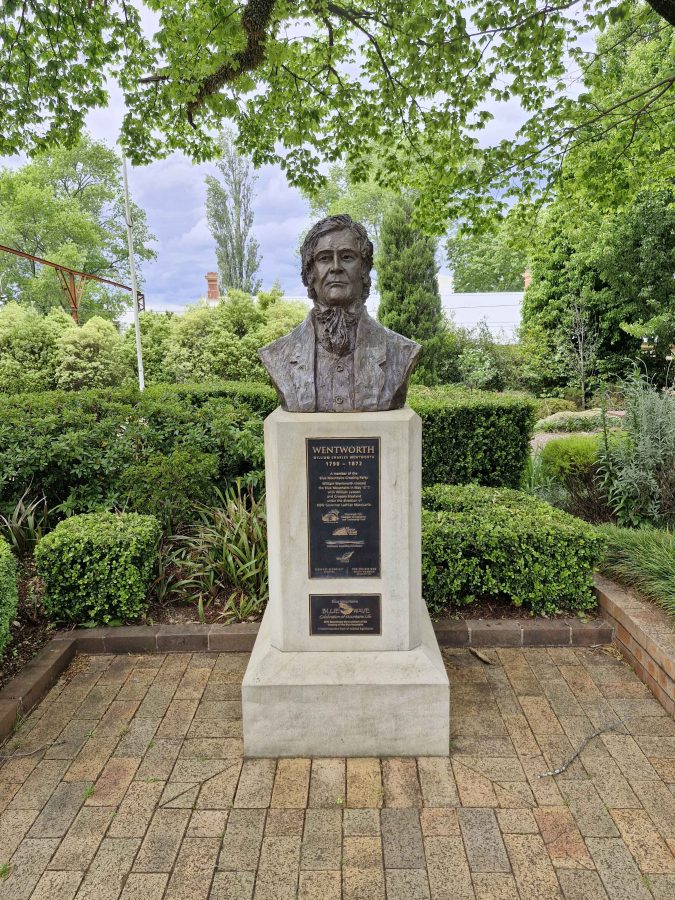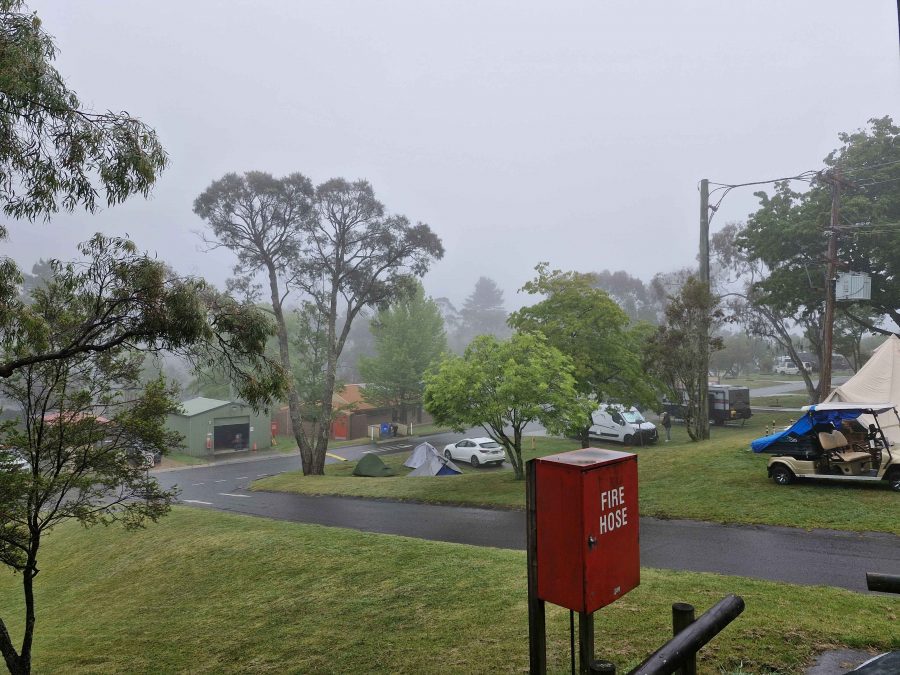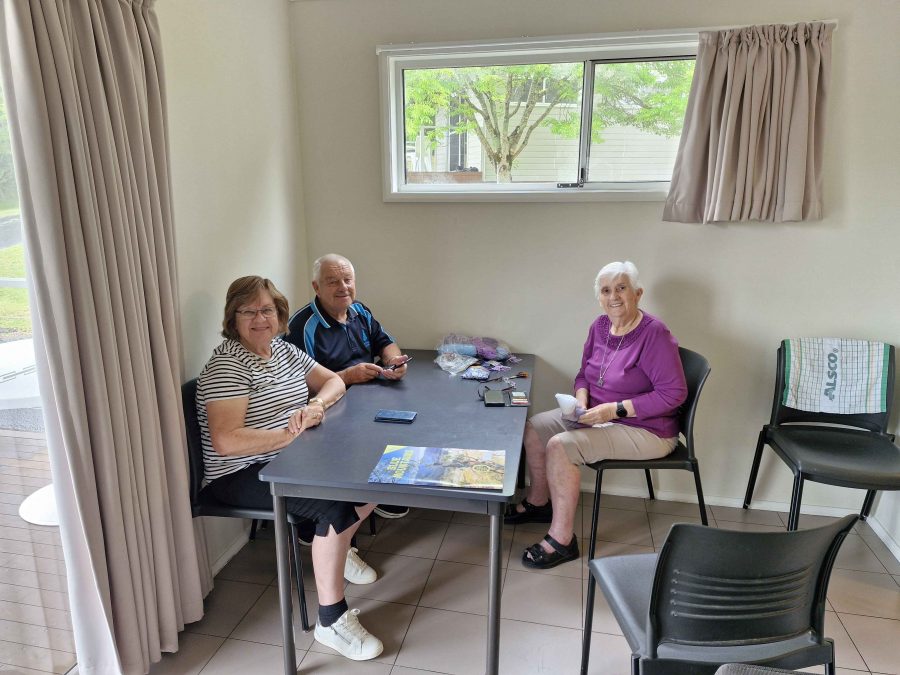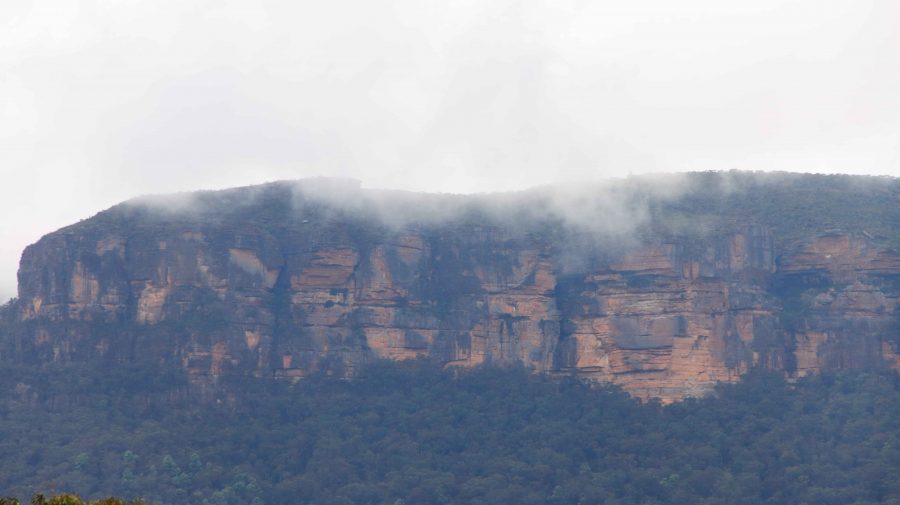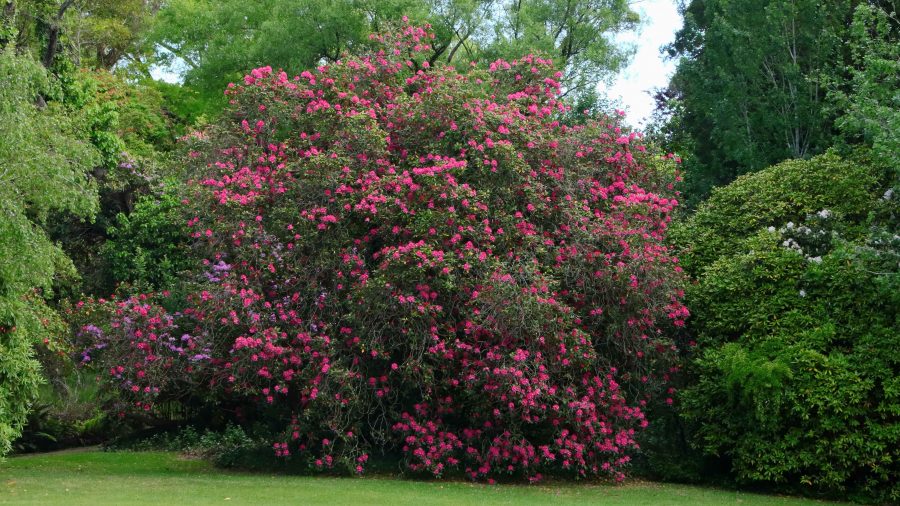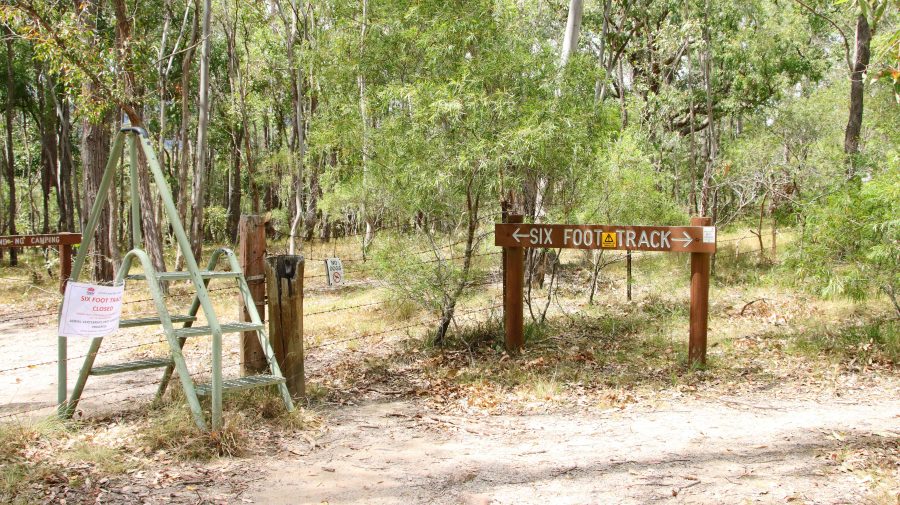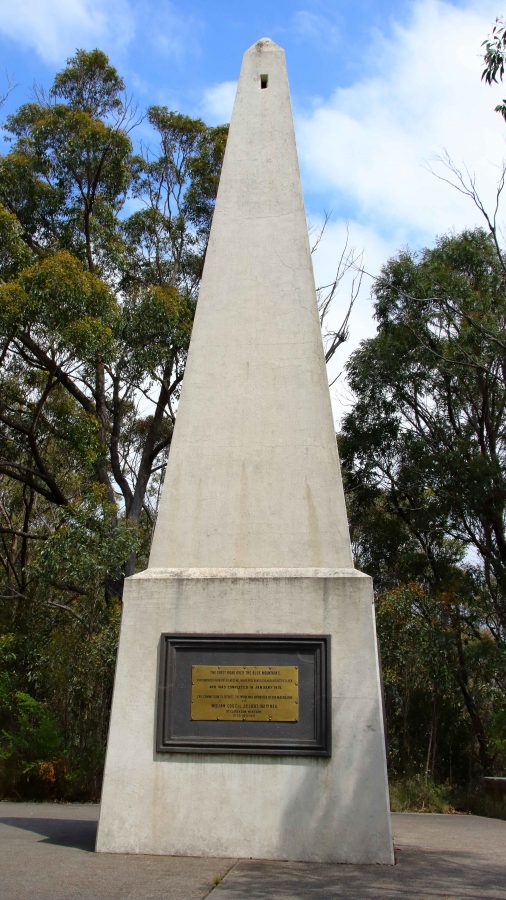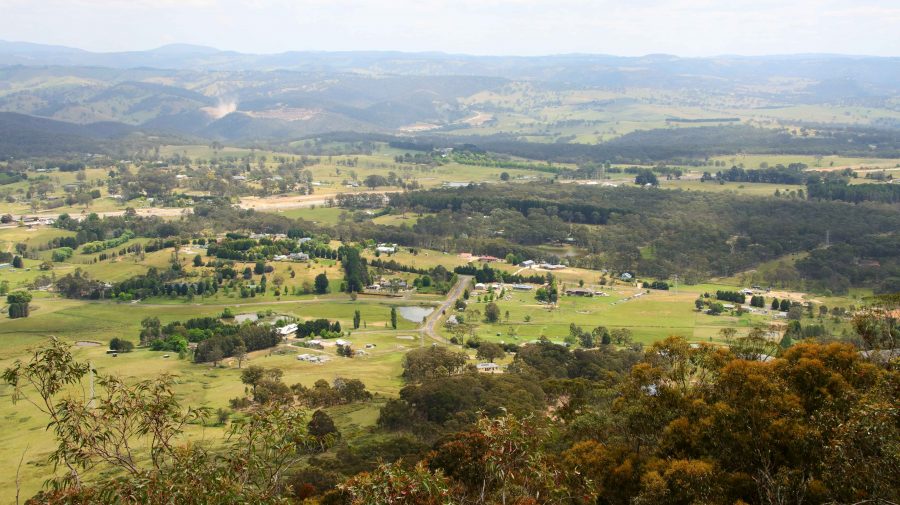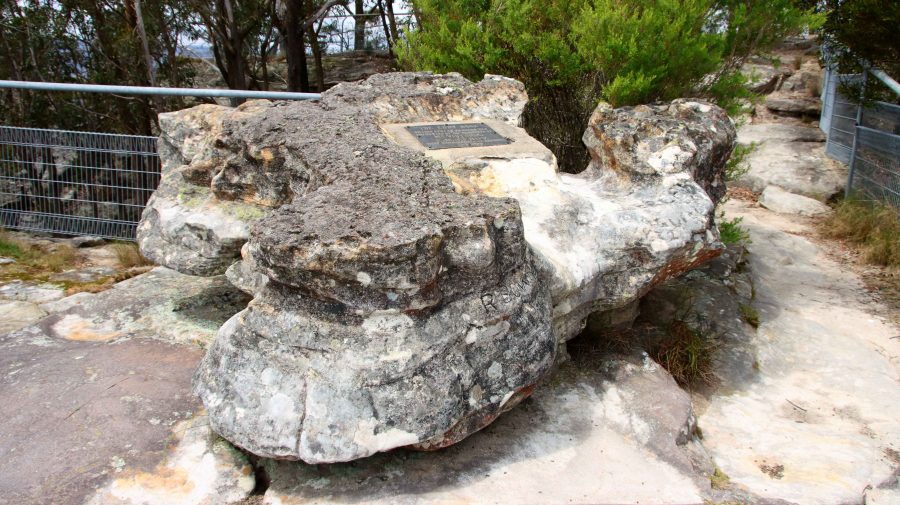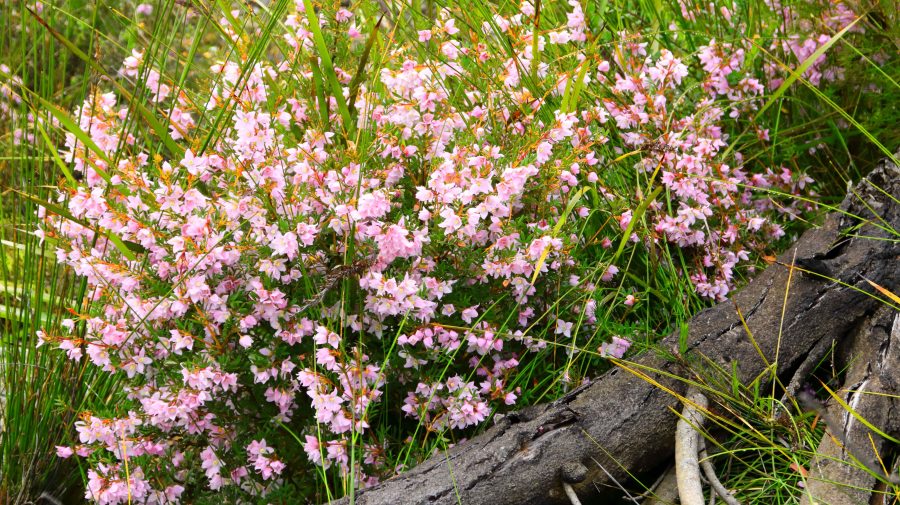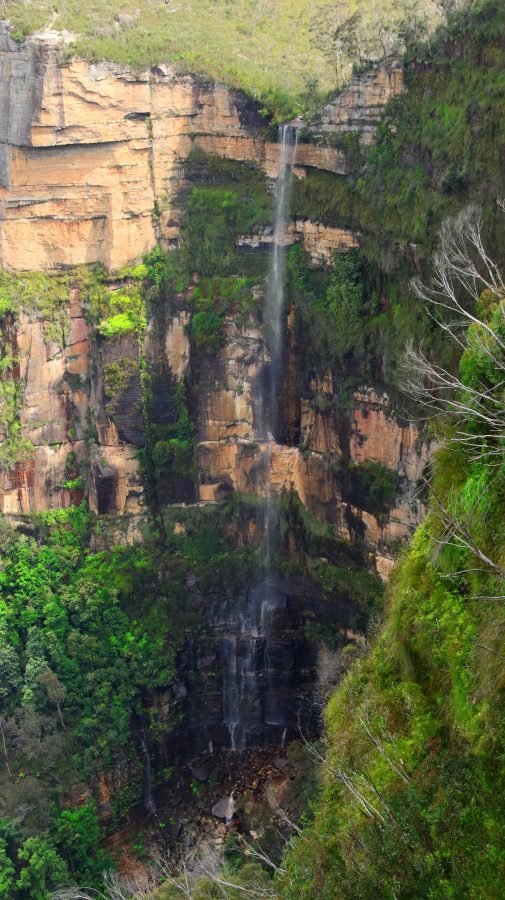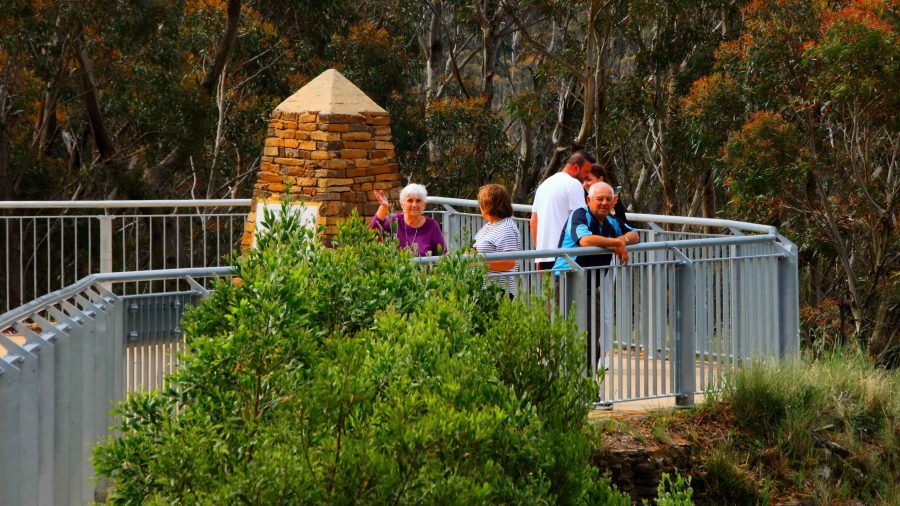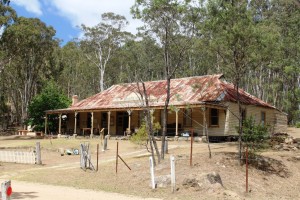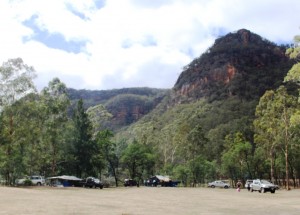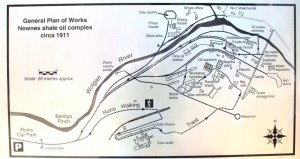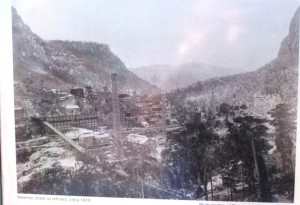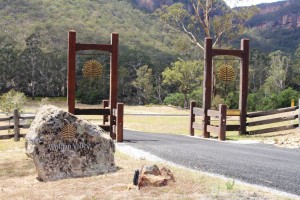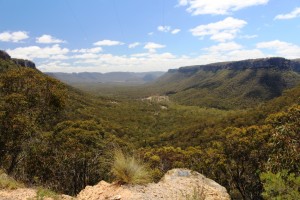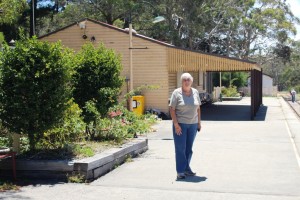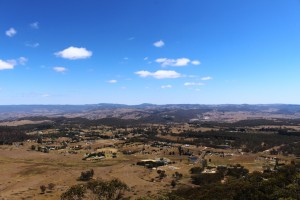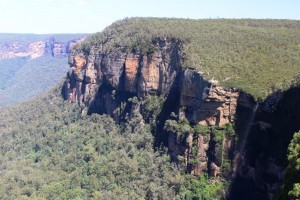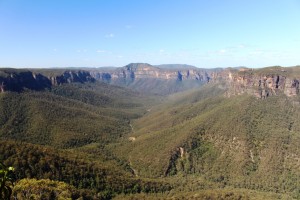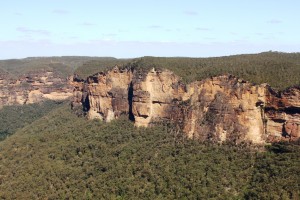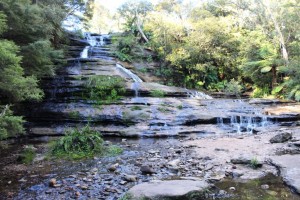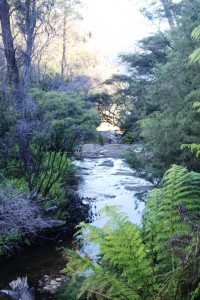Today is the day on which we meet Aileen and Bernard at Blackheath. They are arriving from an overnight stop at Cooma and Ruth and I from three nights at Cronulla.
With time to spare, we stuck to surface roads and left tunnels to the local commuters. We took a rest break at the large Penrith shopping centre, to purchase some necessary supplies and enjoy morning coffee. We proceeded via the old Great Western Highway, crossing the Nepean River on the old bridge and re-joining the new freeway at Blaxland.
The four-lane highway now reaches west of Katoomba and is kept clear of local traffic to some degree by service roads. That can make finding somewhere to pull off a bit more difficult. We did a bit of backtracking but finally found a cafe in the main street of Wentworth Falls for lunch. It was located in the old Wentworth post-office building and offered a pleasant environment for a break. We understand towns that have lost their post-office. We have lost our PO at Redcliffe, too.
We arrived at our lodgings at about 2.00 PM with our rellies arriving about thirty minutes later. Our cabin was on the side of a hill, giving us views over the park. We soon were settled in with a cuppa. I took a walk with my camera as the evening approached. We adjourned to a local pub for dinner.
Tuesday dawned fog bound. It finally lifted at about 10.00 AM so we set off to explore. Govetts Leap with its views into the Gross Valley was just down the road from our cabin so we started there. As expected, it was still fog bound. So we set off for lower country, returning to Blackheath and making our way down the steep narrow road to Megalong Valley. And is was particularly narrow as several hundred meters of half of the road had slidden down the hill during recent heavy rain. A weight limit was in place that would impact larger vehicles.
Our drive took us past the tea house, primary school and Megalong Creek to the point where the Six Foot Track crosses Megalong Road. During the period since we last visited, a couple of wineries and an eco lodge have been established.
The Six Foot Track was closed for pest eradication so there was no walkers. This track was built to provide access for passenger carrying horses transporting tourists from Katoomba to Jenolan Caves in the early days. The track is 42 km long and provides the running track for an annual marathon. It can be walked in about three days. Two if you hurry. It’s name is drawn from the original specification that required it to be built at least six feet wide to allow two loaded horses to pass.
The Megalong Valley Tea House was our lunch destination and provided acceptable food and coffee. Or tea for Bernard. There were a few flies about and cicadas serenaded us from the trees, leaving us in no doubt that we were in the bush.
With a full afternoon ahead of us we drove first to Mount Victoria and then Mount York. Mount Victoria is on the Great Western Highway, just before it plunges down Mount Victoria Pass through Hartley. However the best views to the west are to be seen from Mount York, just 5.5 km along Mount York Road to the north west.
Mount York has a number of monuments to exploration, plus a parking and camping area. There are many mountain tracks and rock climbs in the area. Through a stone archway is a pointed rectangular based monument that commutates, among other things, the first crossing of the Blue Mountains.
Along another track is a fenced lookout and Eddy Rock. Eddy Rock is a memorial to Commissioner Eddy who was in charge of NSW Railways when the railway was extended from Sydney to beyond the mountains. The views from Eddy Rock are spectacular and reach from Hartley, over Cox’s River towards Lithgow. Much green grass and acreage living.
I had read reports of a tunnel to built to provide a less steep road from the west to the top of the Blue Mountains. We had seen significant road works at Medlow Bath. Standing on the lookout at Mount York we could see extensive road duplication approaching the steep mountain side where the Great Western Highway starts its climb. Some research provided the information that a tunnel is under construction. It will steadily climb from the west and join the current highway between Blackheath and Medlow Bath.
From Mount York we worked our way back to Blackheath via various lookouts including Anvil Rock, Perry Lookdown and finally Govetts Leap Lookout.
There was a good wildflower display at Anvil Rock car park and Perry Lookdown provided more views of the Gross Valley. I think it is called a lookdown because of the views that it provides of the forest on the valley floor.
Govetts Leap is very popular as the size of the parking and viewing area suggests. It is said to have gained its name when a government surveyor named Govett jumped his horse over a cliff side fence, landing on a narrow ledge between the fence and a sheer drop of several hundred metres.
Govetts Leap Lookout provides excellent views into the Gross Valley and of the mountain ranges that form it. There are many broad expanses of Sandstone that reflects the sun’s rays on a sunny day. The lookout also provides stunning views of Bridal Veil Falls that drop 180 meters from a stream on the plateau to the valley floor. The water flow was not great but the sheer drop makes up for that. We have seen these falls with more water flowing and they look great. There are several walks in the area, some of them involving many hundreds of steps. Down and then back up!
We returned to the cabin to prepare for the evening. Bernard, a keen golfer, suggested the golf club. We enjoyed a very good meal, but almost had the club dining room to ourselves.
But the day was not quite over. On 28th November Aileen will turn 80. We could not let the event pass without celebrating, so we bought a birthday cake and some candles. We returned to the cabin after dinner to cut the cake and sing “Happy Birthday” but found that we had no matches to light the candles. Undaunted, the candles remained unlit and we dealt with most of the cake. finishing the task with coffee next morning.

